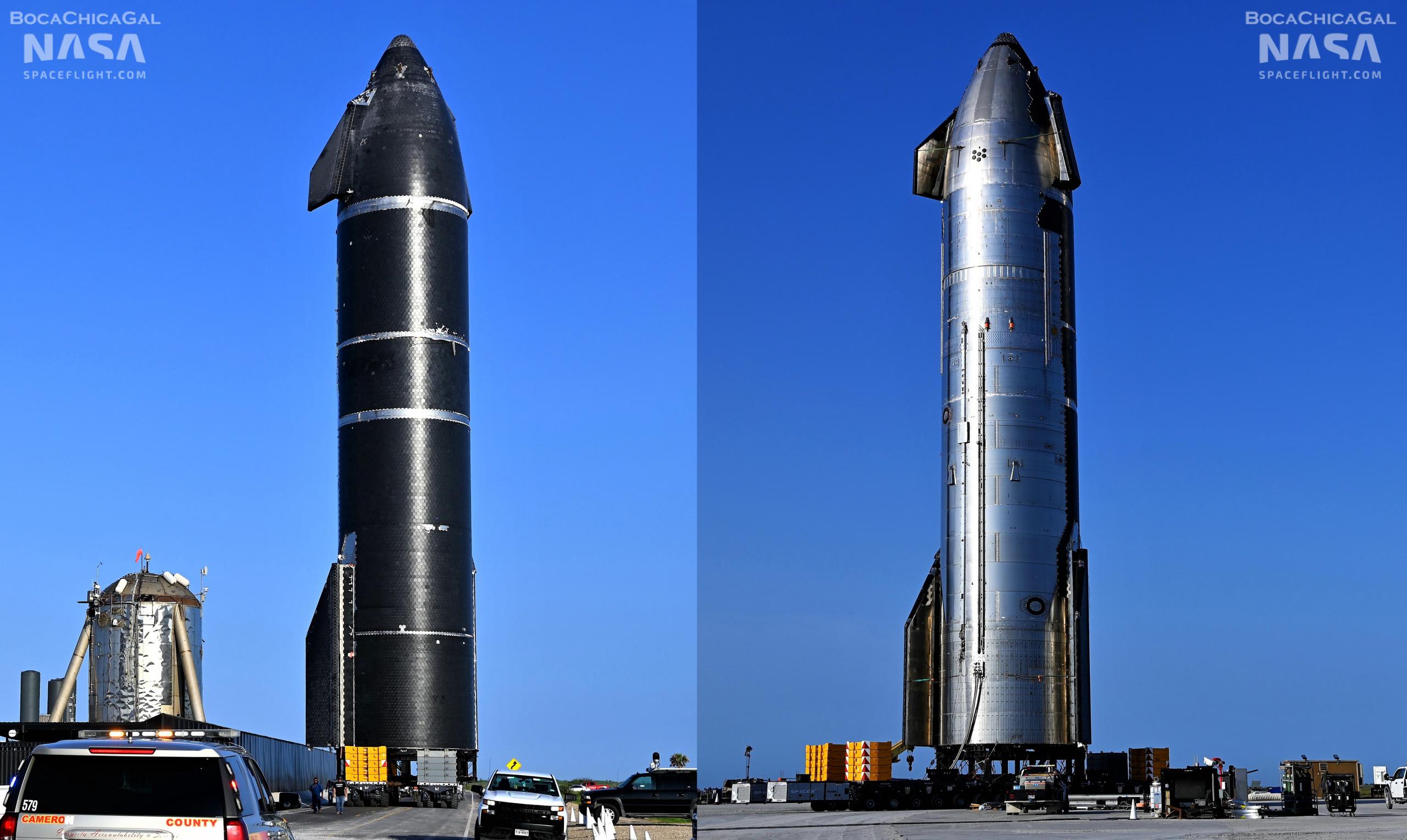
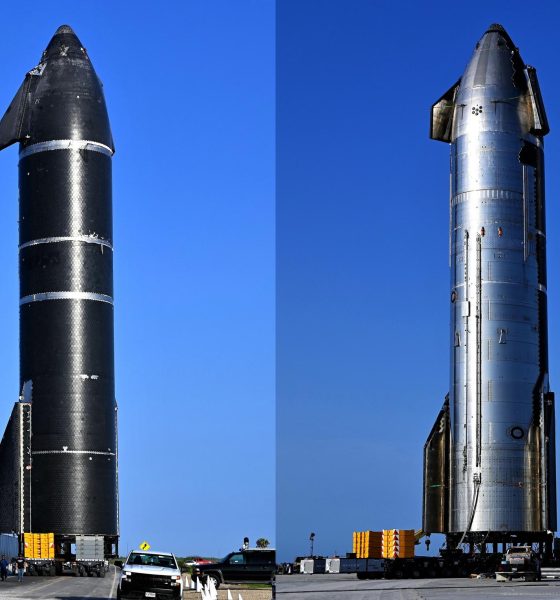
News
SpaceX rolls out first new Starship prototype in nine months
For the first time in more than nine months, SpaceX has rolled a new Starship prototype to its Starbase, Texas launch facilities in the hopes of kicking off qualification testing in the near future.
The new activity exemplifies just how different – and more subdued – Starbase’s last year has been compared to the year prior. However, it also signals new hope for a significantly more eventful 2022 as SpaceX once again finds itself preparing for Starship’s first orbital launch attempt – albeit with an entirely different rocket.

The last time SpaceX rolled a new and functional Starship prototype from the factory to the test stand was on August 13th, 2021, when Starship S20 was transported back to the pad for the second time that month. On August 5th, the same unfinished Starship was stacked on top of Super Heavy booster B4, briefly assembling the largest rocket ever built. With the luxury of hindsight, it’s now clear that that particular milestone was more of a photo-op than a technical achievement. Nonetheless, Ship 20’s path was far more productive than Booster 4’s. The Starship returned to the Starbase factory for a few days of finishing touches before arriving back at the pad on August 13th. Only in the last week of September did Ship 20 finally begin its first significant tests, followed by its first Raptor static fire in mid-October. In mid-November, Ship 20 completed the first of several successful six-Raptor static fires.
Ultimately, by the time Ship 20 was retired in May 2022, the Starship was arguably fully ready to attempt to reach orbit or at least perform some kind of ambitious hypersonic test flight. However, Super Heavy Booster 4 never made it even a fraction of the way to a similar level of flight readiness and SpaceX never received the FAA environmental approval or launch license needed for an orbital launch attempt.
Only now, in May 2022, does it finally look likely that SpaceX will finally receive the necessary permissions for a limited orbital test flight campaign in the near future. While it’s hard to say if Booster 4 and Ship 20 could have supported some kind of launch campaign if permission had been granted months ago, what’s clear is that all aspects – flight hardware, pad hardware, and bureaucracy – have been chronically delayed to the point that Booster 4 and Ship 20 are now heavily outdated.
In their place, now, stand Super Heavy B7 and Starship S24 – the new ‘chosen ones’ assigned to Starship’s orbital launch debut. Both feature extensive design changes and account for an upgraded version of the Raptor engine and countless lessons learned over the better part of a year spent troubleshooting and testing their predecessors. While it did get off to a rocky start, Booster 7 has already completed several cryogenic proof tests and is in the middle of being outfitted with 33 new Raptor engines.
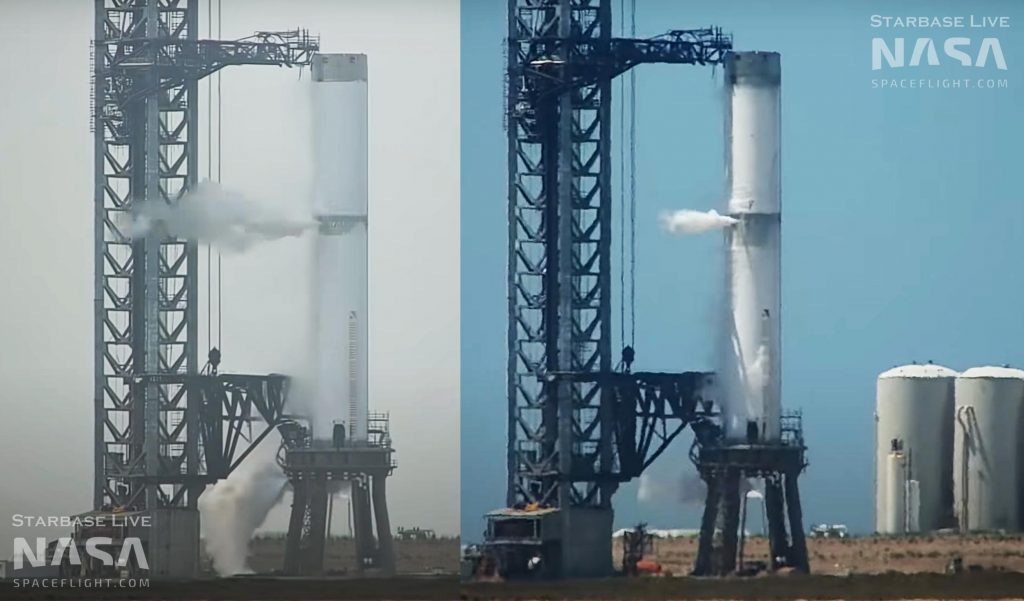
On the other hand, perhaps indicating SpaceX’s satisfaction with Ship 20’s performance, Starship S24 has been on the back burner in comparison. Only on May 26th, 2022 did SpaceX finally finish the prototype to the point that it was ready to begin qualification testing. Missing hundreds of TPS tiles and an aerocover cap, Ship 24 was quickly moved into position at a sort of drive-by test stand where it appears the prototype will first need to pass basic pressure and cryogenic proof tests.
If it passes those tests, SpaceX will then install Ship 24 on a suborbital launch and test stand (Suborbital Pad A) that has been significantly modified for qualification testing. Rather than leaping straight into static fires, SpaceX will minimize the risk of catastrophic failure by first using hydraulic rams to simulate the thrust of six Raptor V2 engines while Starship’s steel tanks and plumbing are chilled to cryogenic temperatures. Only after Ship 24 completes stress testing will SpaceX install new Raptor engines and prepare to replicate Ship 20’s success with several static fires.
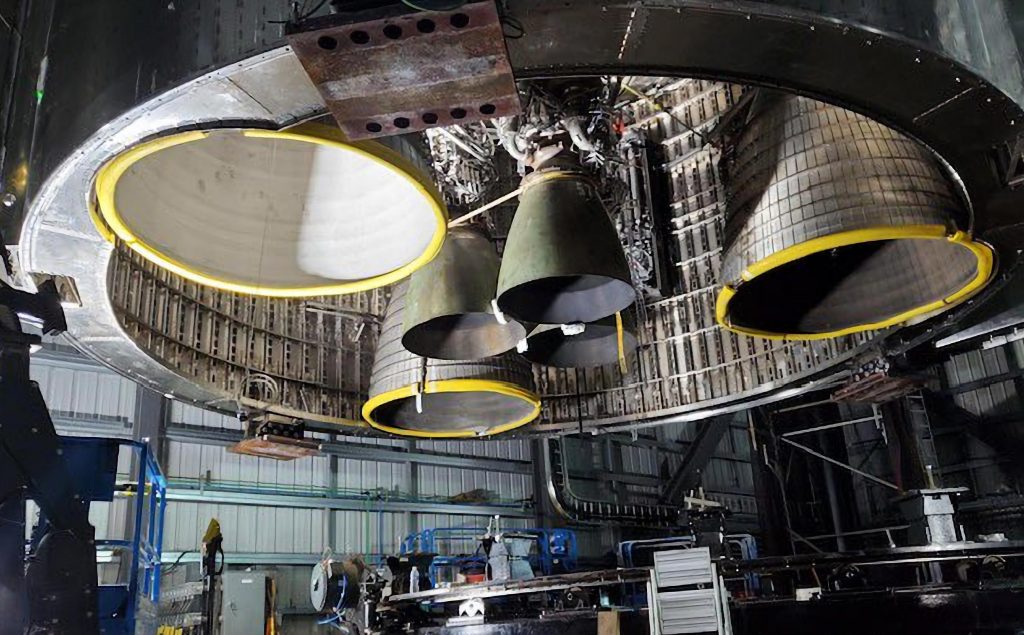
Thanks to Raptor V2’s improvements, Ship 24 will likely need to withstand around 1400 tons (~3.1M lbf) of thrust at liftoff – almost 25% more than Ship 20 ever experienced. Beyond a sturdier thrust section, Ship 24 is also the first Starship SpaceX has outfitted with a next-generation nose; the first with a significant landing propellant (‘header’) tank redesign; and the first with a potentially functional payload bay and door.
Assuming Ship 24 passes all planned cryoproof and thrust simulation tests, it remains to be seen if SpaceX will return the Starship to Starbase factory facilities or – like with Ship 20 – install Raptors and finish its heat shield and thermal protection while sitting on the test stand. SpaceX has two test windows currently scheduled: one from 6am to 12pm CDT on Friday, May 27th and the other from 10am to 10pm CDT on Tuesday, May 31st.

News
Tesla FSD’s newest model is coming, and it sounds like ‘the last big piece of the puzzle’
“There’s a model that’s an order of magnitude larger that will be deployed in January or February 2026.”

Tesla Full Self-Driving’s newest model is coming very soon, and from what it sounds like, it could be “the last big piece of the puzzle,” as CEO Elon Musk said in late November.
During the xAI Hackathon on Tuesday, Musk was available for a Q&A session, where he revealed some details about Robotaxi and Tesla’s plans for removing Robotaxi Safety Monitors, and some information on a future FSD model.
While he said Full Self-Driving’s unsupervised capability is “pretty much solved,” and confirmed it will remove Safety Monitors in the next three weeks, questions about the company’s ability to give this FSD version to current owners came to mind.
Musk said a new FSD model is coming in about a month or two that will be an order-of-magnitude larger and will include more reasoning and reinforcement learning.
He said:
“There’s a model that’s an order of magnitude larger that will be deployed in January or February 2026. We’re gonna add a lot of reasoning and RL (reinforcement learning). To get to serious scale, Tesla will probably need to build a giant chip fab. To have a few hundred gigawatts of AI chips per year, I don’t see that capability coming online fast enough, so we will probably have to build a fab.”
NEWS: Elon Musk says FSD Unsupervised is “pretty much solved at this point” and that @Tesla will be launching Robotaxis with no safety monitors in about 3 weeks in Austin, Texas. He also teased a new FSD model is coming in about 1-2 months.
“We’re just going through validation… https://t.co/Msne72cgMB pic.twitter.com/i3wfKX3Z0r
— Sawyer Merritt (@SawyerMerritt) December 10, 2025
It rings back to late November when Musk said that v14.3 “is where the last big piece of the puzzle finally lands.”
With the advancements made through Full Self-Driving v14 and v14.2, there seems to be a greater confidence in solving self-driving completely. Musk has also personally said that driver monitoring has been more relaxed, and looking at your phone won’t prompt as many alerts in the latest v14.2.1.
This is another indication that Tesla is getting closer to allowing people to take their eyes off the road completely.
Along with the Robotaxi program’s success, there is evidence that Tesla could be close to solving FSD. However, it is not perfect. We’ve had our own complaints with FSD, and although we feel it is the best ADAS on the market, it is not, in its current form, able to perform everything needed on roads.
But it is close.
That’s why there is some legitimate belief that Tesla could be releasing a version capable of no supervision in the coming months.
All we can say is, we’ll see.
Investor's Corner
SpaceX IPO is coming, CEO Elon Musk confirms
However, it appears Musk is ready for SpaceX to go public, as Ars Technica Senior Space Editor Eric Berger wrote an op-ed that indicated he thought SpaceX would go public soon. Musk replied, basically confirming it.

Elon Musk confirmed through a post on X that a SpaceX initial public offering (IPO) is on the way after hinting at it several times earlier this year.
It also comes one day after Bloomberg reported that SpaceX was aiming for a valuation of $1.5 trillion, adding that it wanted to raise $30 billion.
Musk has been transparent for most of the year that he wanted to try to figure out a way to get Tesla shareholders to invest in SpaceX, giving them access to the stock.
He has also recognized the issues of having a public stock, like litigation exposure, quarterly reporting pressures, and other inconveniences.
However, it appears Musk is ready for SpaceX to go public, as Ars Technica Senior Space Editor Eric Berger wrote an op-ed that indicated he thought SpaceX would go public soon.
Musk replied, basically confirming it:
As usual, Eric is accurate
— Elon Musk (@elonmusk) December 10, 2025
Berger believes the IPO would help support the need for $30 billion or more in capital needed to fund AI integration projects, such as space-based data centers and lunar satellite factories. Musk confirmed recently that SpaceX “will be doing” data centers in orbit.
AI appears to be a “key part” of SpaceX getting to Musk, Berger also wrote. When writing about whether or not Optimus is a viable project and product for the company, he says that none of that matters. Musk thinks it is, and that’s all that matters.
It seems like Musk has certainly mulled something this big for a very long time, and the idea of taking SpaceX public is not just likely; it is necessary for the company to get to Mars.
The details of when SpaceX will finally hit that public status are not known. Many of the reports that came out over the past few days indicate it would happen in 2026, so sooner rather than later.
But there are a lot of things on Musk’s plate early next year, especially with Cybercab production, the potential launch of Unsupervised Full Self-Driving, and the Roadster unveiling, all planned for Q1.
News
Tesla adds 15th automaker to Supercharger access in 2025
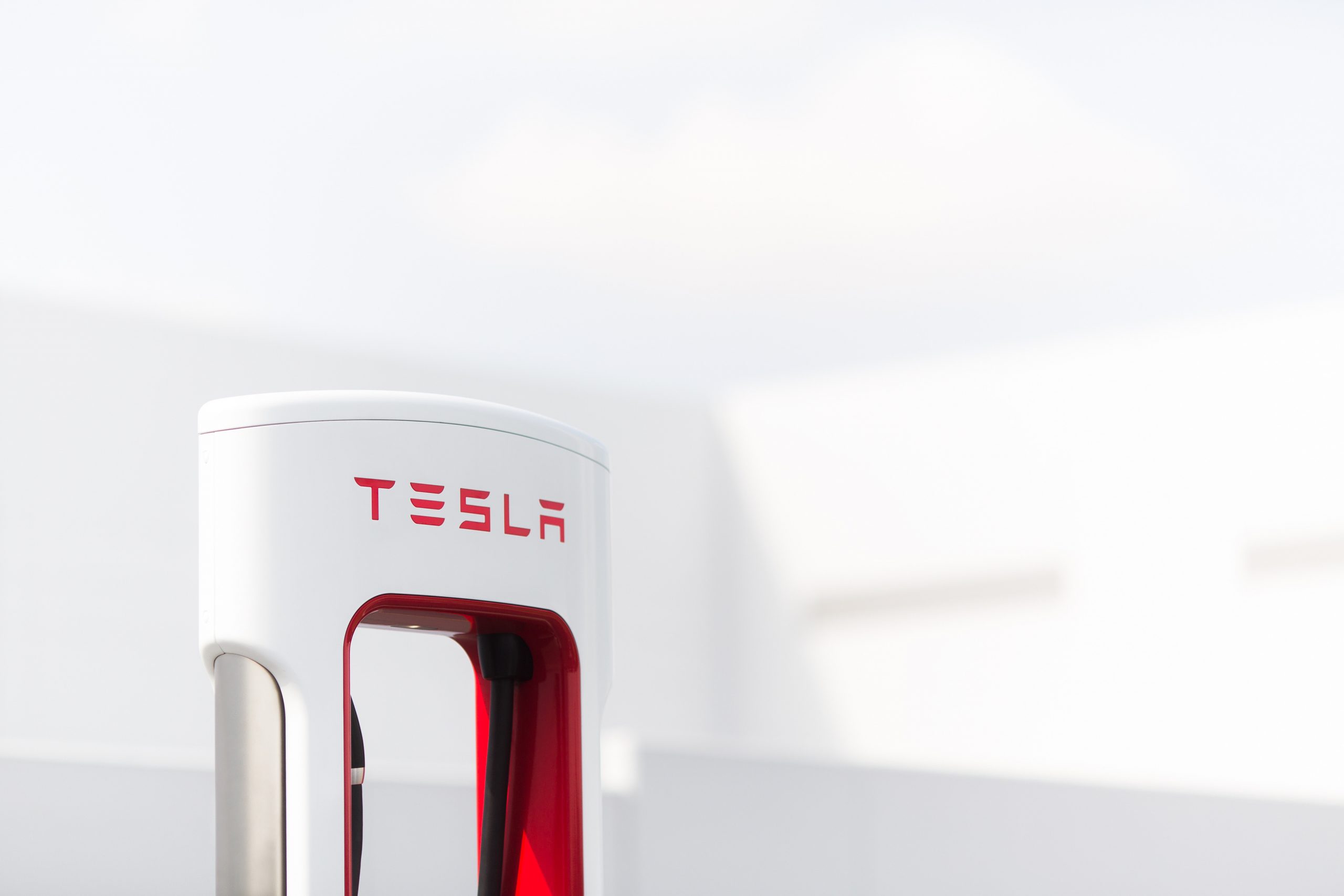
Tesla has added the 15th automaker to the growing list of companies whose EVs can utilize the Supercharger Network this year, as BMW is the latest company to gain access to the largest charging infrastructure in the world.
BMW became the 15th company in 2025 to gain Tesla Supercharger access, after the company confirmed to its EV owners that they could use any of the more than 25,000 Supercharging stalls in North America.
Welcome @BMW owners.
Download the Tesla app to charge → https://t.co/vnu0NHA7Ab
— Tesla Charging (@TeslaCharging) December 10, 2025
Newer BMW all-electric cars, like the i4, i5, i7, and iX, are able to utilize Tesla’s V3 and V4 Superchargers. These are the exact model years, via the BMW Blog:
- i4: 2022-2026 model years
- i5: 2024-2025 model years
- 2026 i5 (eDrive40 and xDrive40) after software update in Spring 2026
- i7: 2023-2026 model years
- iX: 2022-2025 model years
- 2026 iX (all versions) after software update in Spring 2026
With the expansion of the companies that gained access in 2025 to the Tesla Supercharger Network, a vast majority of non-Tesla EVs are able to use the charging stalls to gain range in their cars.
So far in 2025, Tesla has enabled Supercharger access to:
- Audi
- BMW
- Genesis
- Honda
- Hyundai
- Jaguar Land Rover
- Kia
- Lucid
- Mercedes-Benz
- Nissan
- Polestar
- Subaru
- Toyota
- Volkswagen
- Volvo
Drivers with BMW EVs who wish to charge at Tesla Superchargers must use an NACS-to-CCS1 adapter. In Q2 2026, BMW plans to release its official adapter, but there are third-party options available in the meantime.
They will also have to use the Tesla App to enable Supercharging access to determine rates and availability. It is a relatively seamless process.








